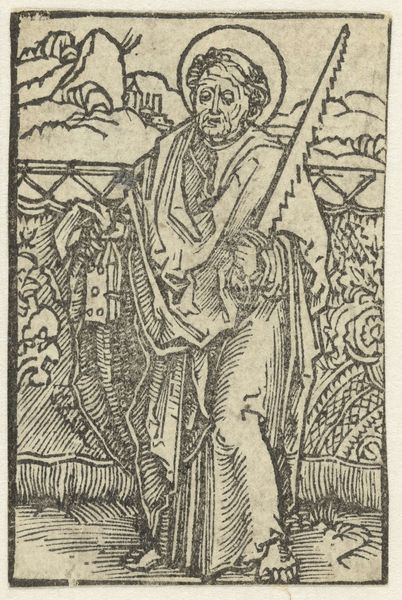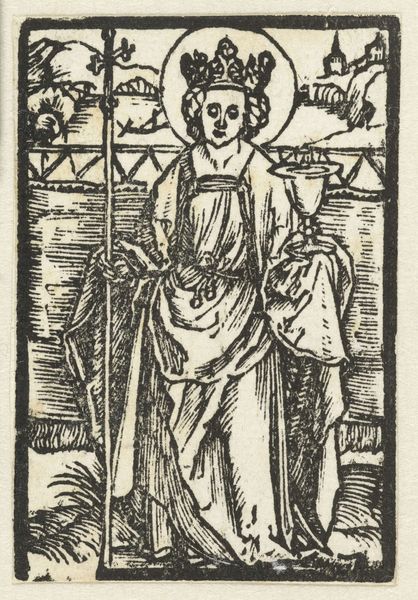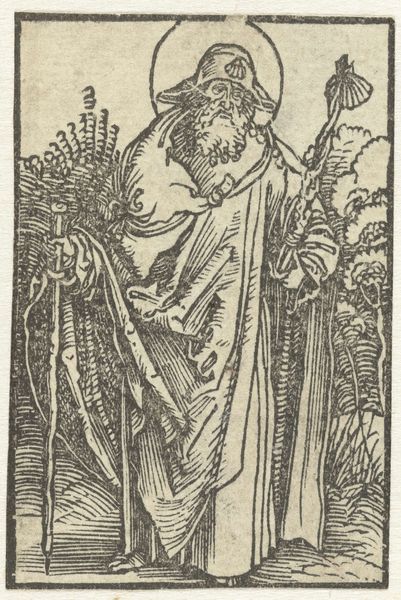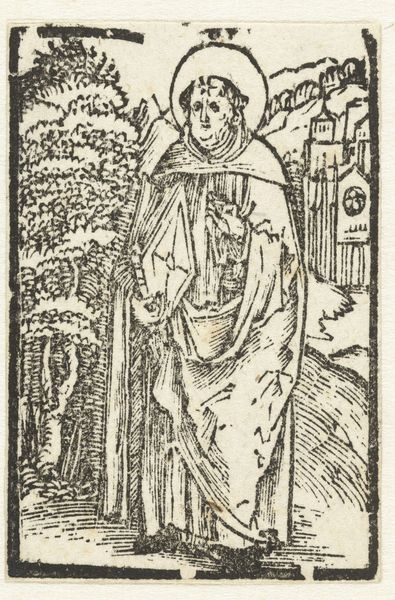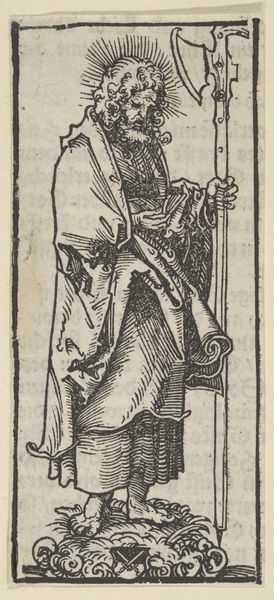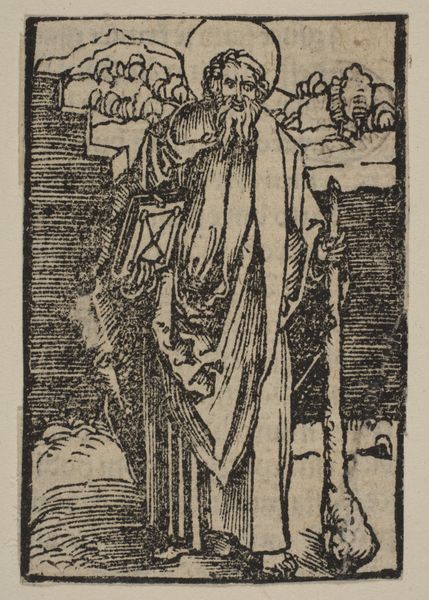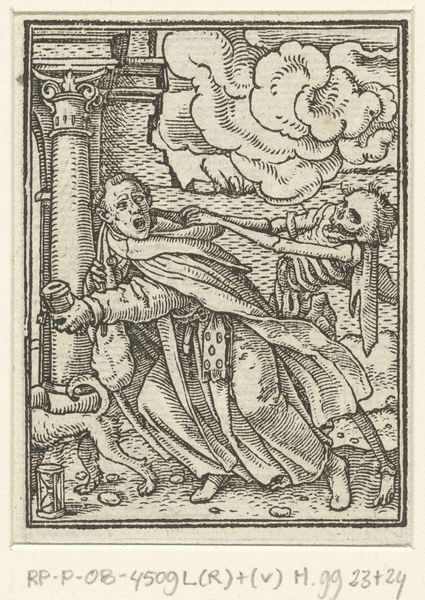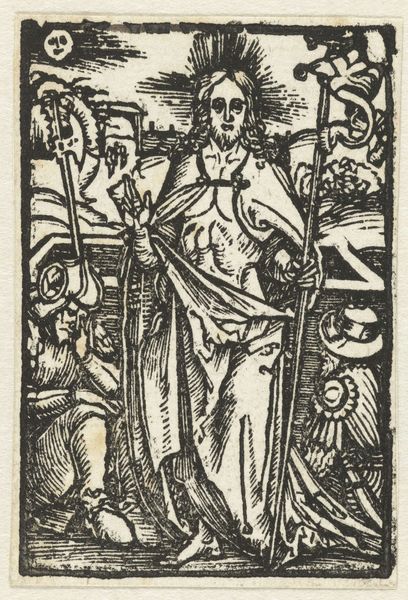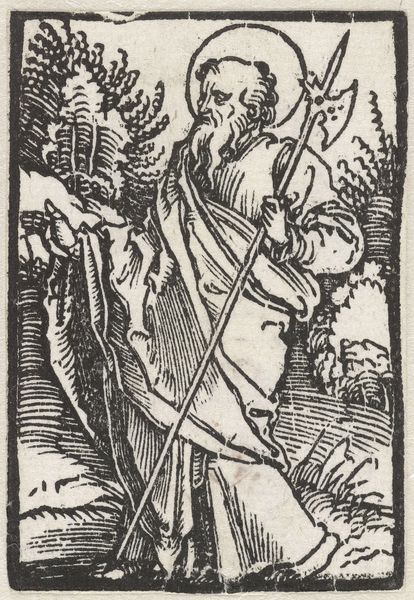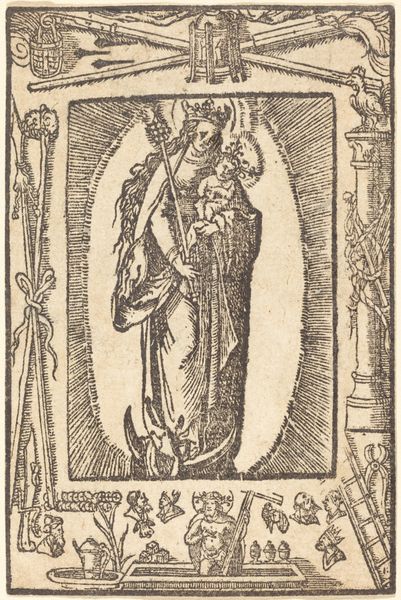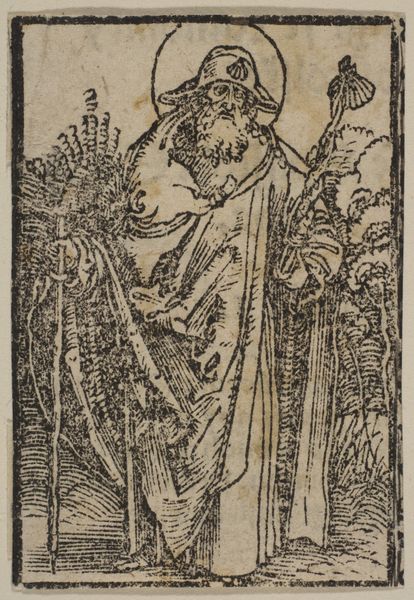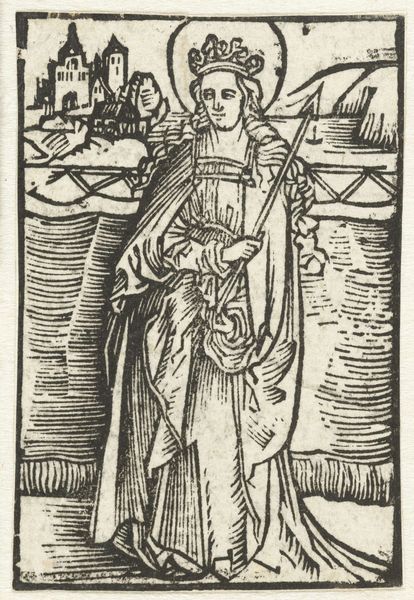
drawing, print, woodcut
#
drawing
# print
#
figuration
#
woodcut
#
history-painting
#
northern-renaissance
Dimensions: sheet: 2 3/8 x 1 5/8 in. (6.1 x 4.1 cm)
Copyright: Public Domain
This is Albrecht Dürer's woodcut "Saint John," now at the Metropolitan Museum of Art. The density of line and form immediately strikes you. Notice how the graphic texture—achieved through careful, deliberate cuts into the woodblock—shapes our perception. The composition is organized to have St. John in the front, but it is also divided between earthly and divine realms. A dynamic relationship plays out between the figure, the landscape, and the symbolic objects surrounding St. John. The lines create sharp contrasts that invite us to decode their symbolic meaning. Consider how the texture functions—the cross-hatching that defines shadow and depth, the careful lines articulating drapery, and the halo that suggests a divine presence. These elements aren't just decorative; they function semiotically, communicating ideas about spirituality, the natural world, and the artist’s engagement with both religious tradition and new modes of visual representation. As you reflect on the artwork, think about the way the linear structures not only depict an image but also embody a complex intersection of art, religion, and philosophy.
Comments
No comments
Be the first to comment and join the conversation on the ultimate creative platform.
